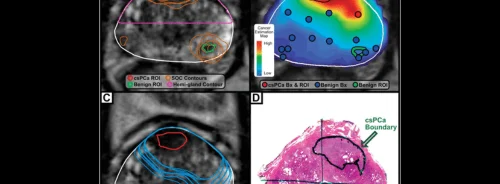HealthManagement, Volume 6 - Issue 4, 2006
The term ‘Interventional Radiology’ represents diagnostic and therapeutic procedures that are minimally invasive and guided by an imaging method be it fluoroscopy, ultrasound, CT or MRI. These procedures, developed over many years by radiologists, have become core components of the services offered by radiology departments and an essential part of management of many disorders. The success of these techniques has required many adaptations in the way patients are treated and the roles and responsibilities of the clinicians involved. There is increasing strain on radiology departments due to insufficient radiologists and an inadequate allocation of financial resources for consumables and staff time necessary for treating often complex conditions. While this is recognised by radiologists it is not always appreciated by managers and rarely by purchasers. In order to change this situation a number of points need to be addressed.
It must be recognised that radiologists are responsible for the care of the patient while they are providing treatment in the same manner as any other clinician and this must be recognised in their job plan and the facilities available to them. They need outpatient facilities to review patients prior to treatment and for follow-up and they also require access to beds which may be in day care facilities or for longer term treatment. The patients may be the sole clinical responsibility of the radiologist or in conjunction with other clinicians and radiologists must have sufficient clinical training and knowledge to manage those cases for which they are taking responsibility.
The radiologist involved in interventional procedures must be given the appropriate time in their work plan to undertake the clinical part of their work and the recording of work undertaken by radiology departments must be weighted accordingly to reflect this. A major reallocation of funding must also be made to radiology, which is often disadvantaged by payment systems.
It is often the case that the same procedure undertaken by a radiologist and a non-radiological clinician receive widely differing payments, as within radiology they are classed as a test compared to a full clinical episode in other hospital departments for exactly the same process. The DRG system covers the whole clinical episode and is usually allocated to the clinical department not to radiology which receives considerably less than is commensurate for the work undertaken. When interventional radiology techniques become the main therapeutic modality for a clinical condition the resource allocations are often not transferred and the original clinical area reduced to allow for the change in the treatment algorithm.
It is therefore essential that radiologists undertaking interventional procedures and minimally invasive treatments are enabled to perform these tasks safely and with adequate resources. This edition of the journal focuses on a number of these areas and should increase the understanding of radiology and hospital managers and also purchasers of the requirements of a successful interventional radiology service.
Prof. Iain McCall
�




